Disclaimer: This post may contain Amazon affiliate links. Sudachi earns a small percentage from qualifying purchases at no extra cost to you. See disclaimer for more info.
The most common question I get on my website and social media channels like YouTube is: “What can I substitute for this ingredient?” It makes perfect sense.
Japanese cuisine uses many unique (or potentially intimidating) ingredients that can be difficult to find outside of Japan. So, I created this comprehensive guide to serve as a one-stop solution for those facing this challenge.
If you’re looking for reliable substitutes, this is your go-to resource and I will continue to built it up over time. If something is missing, leave a comment and I’ll add it to the list!
Japanese Soy Sauce (Koikuchi Shoyu)
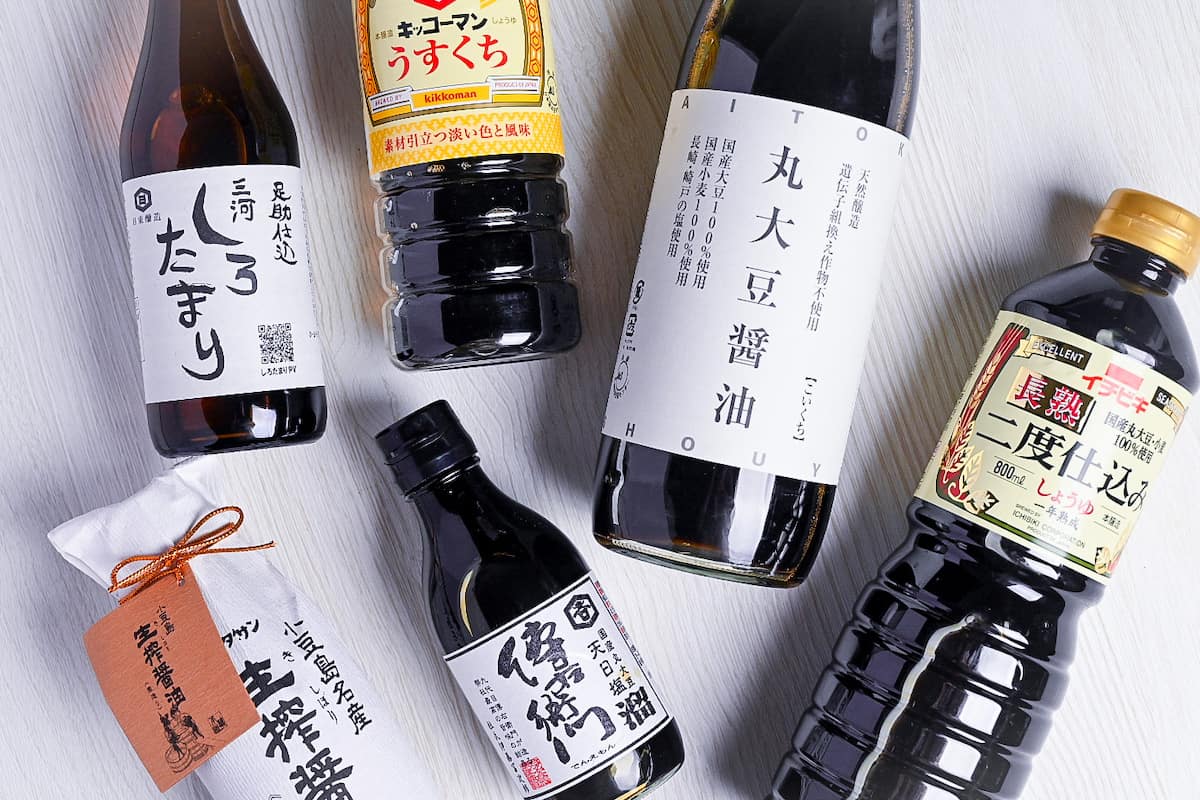
Japanese dark soy sauce is the backbone of Japanese cuisine. You’ll find it in almost everything. Made from fermented soybeans and wheat, it provides the perfect balance of saltiness, umami, and aromatic depth that gives Japanese dishes their authentic flavor.
Alternative 1: Chinese Light Soy Sauce (生抽)
It’s lighter in color and has a slightly higher salt content, but is very similar to the Japanese variety. When I lived in England and was on a tight budget, I used this as my go-to substitute for economic reasons. Outside of Japan, it’s usually much cheaper than Japanese soy sauce, which is a major advantage.
- Taste impact: Cleaner, more straightforward soy flavor, less complexity but totally functional
- Use exactly: 1:1 ratio
- Perfect when: Your Asian market only carries Chinese brands
- Watch out for: The flavor difference shows in delicate dishes like clear soups. Use less or skip it there.
- My take: Personally, I find this the most versatile substitute
Alternative 2: Tamari (as GF option)
Thicker and slightly sweeter than regular soy sauce, tamari really shines in dishes where you want that extra richness.
- Taste impact: Richer, more viscous with pronounced sweetness.
- Use exactly: 1:1 ratio.
- Perfect when: You need gluten-free alternative.
- Watch out for: The thickness and sweetness can overwhelm lighter dishes.
- My take: Skip this unless you specifically need gluten-free. While it’s fantastic for teriyaki and sashimi, the extra sweetness can throw off other recipes.
Not Recommended Alternatives
- Chinese dark soy sauce (老抽): Way too thick and sweet. If you’re going for a Chinese alternative, it has to be Chinese light soy sauce.
- Oyster sauce: Completely different flavor profile with seafood notes.
- Worcestershire sauce: Too acidic and fruity for a substitute.
- Fish sauce: The fishy aroma doesn’t match Japanese flavor profiles.
Bottom Line
Stick to these two: Chinese light soy sauce if availability is your issue, tamari if you need gluten-free. That said, Kikkoman and other Japanese brands are widely available now, so unless you have specific dietary constraints, I recommend grabbing the real thing.
For those wanting to learn more about Japanese soy sauce or discover recommended brands, check out my detailed soy sauce guide.
Hon Mirin

Hon mirin is an important Japanese ingredient with many uses. Made from glutinous rice, rice malt, and brewing alcohol, mirin contains about 14% alcohol, 50% sugar, and amino acids and aromatic compounds that provide a complexity not found in plain sugar.
Alternative 1: Mirin-Style Seasoning
Many bottles labeled “mirin” at your grocery store outside Japan are this stuff. With less than 1% alcohol versus real mirin’s 14%, it’s made with corn syrup and additives instead of fermentation. But plenty of Japanese home cooks use it too, so you don’t need to stress about it.
- Taste impact: Less complex, missing that fermented depth, but gets the job done.
- Use exactly: 1:1 ratio.
- Perfect when: You can’t find real mirin or want to save money.
- Watch out for: Often sweeter than real mirin; burns easier in long-cooking dishes due to higher sugar content.
- My take: Works fine for most home cooking. Don’t overthink it.
Alternative 2: Sugar + Alcohol
This is your DIY approach: combine sweetness with alcohol to mimic what mirin does. Best option is sake + sugar, but dry white wine + sugar works too if that’s what you have.
- Taste impact: You get the sweet-alcohol combo, but miss mirin’s unique umami depth. Flavors stay more separated rather than harmonized.
- Use exactly: For 1 tbsp mirin → 1 tbsp sake + 1 tsp to 1½ tsp sugar (or 1 tbsp sake + 1 tsp honey)
- Perfect when: You don’t want to buy a whole bottle just for occasional Japanese cooking.
- Watch out for: Mix the sugar in completely before using. Undissolved sugar burns easily. Choose slightly sweet white wine over bone-dry versions.
- My take: Solid backup when you already have sake or white wine around.
Alternative 3: Cola
I know this sounds crazy, but cola actually can work with certain dishes. For example, I’ve made teriyaki chicken with it, and it was genuinely delicious. Its sweetness, slight spiciness, and caramel notes can mimic some of the effects of mirin.

- Taste impact: Adds cola’s distinctive sweetness and subtle spice blend.
- Use exactly: 1:1 ratio.
- Perfect when: You need alcohol-free and don’t want to buy specialty ingredients.
- Watch out for: Only works for small amounts. Cola flavor gets overwhelming in recipes calling for lots of mirin.
- My take: Surprisingly good for teriyaki, but definitely a “fun experiment” substitute.
Not Recommended Alternatives
- Plain sugar: Gives sweetness but zero complexity or glaze.
- Apple juice: Too acidic and fruity for Japanese flavors.
- Sake alone: Missing the sweetness entirely.
- Rice vinegar + sugar: The acidity completely ruins the flavor profile. Vinegar has no place in mirin substitutes.
Bottom Line
If it’s available, get mirin-style seasoning. It’s specifically designed for this job. If you’re making it yourself, sake and sugar are your best bet.
If you want to learn more about mirin or find out which brands are recommended, check out my mirin guide.
Sake

Sake, a Japanese rice wine with an alcohol content of 14-16%, is a cornerstone of Japanese cooking. It contains amino acids that eliminate odors while enhancing the flavors of ingredients.
Before we dive in, I recommend skipping “cooking sake” if possible. It contains added salt purely to avoid alcohol taxes, and I’d rather use the cheapest drinkable sake you can find. Even the cheapest junmai sake will produce cleaner, better results than salted cooking sake.
Alternative 1: Cooking Sake
Despite what I just said, most Japanese households actually use this, so don’t feel bad about it. It’s essentially sake with about 2% salt added to avoid alcohol taxes. It’s similar to the difference between real mirin and mirin-style seasoning.
- Taste impact: Saltier overall with less finesse than pure sake, but similar odor-eliminating effects.
- Use exactly: 1:1 ratio.
- Perfect when: You want the most economical option.
- Watch out for: The added salt concentrates during long cooking, so reduce other salt in your recipe accordingly.
- My take: Works fine for most dishes, but the salt addition can throw off delicate soups and clear broths.
Alternative 2: Dry White Wine (Or Dry Sherry)
For heartier dishes (think beef bowls, not delicate fish), dry white wine actually works well. It’s more acidic than sake, which changes how it affects proteins, but in robust dishes you won’t notice.
- Taste impact: Adds wine’s acidity and fruit notes-noticeable in quick-cooking dishes, less so in long braises.
- Use exactly: 80% dry white wine + 20% water.
- Perfect when: You don’t want to buy cooking sake and have wine around.
- Watch out for: Choose dry, not sweet wine. Avoid heavily oaked wines that clash with Japanese flavors. Add a pinch of sugar if too acidic.
- My take: Great for teriyaki and braised dishes, but skip it for delicate preparations like clear soups.
Alternative 3: Kombu Dashi + Salt
Kombu dashi with a pinch of salt gives you umami without alcohol. Add ginger if you need odor-eliminating effects.
- Taste impact: Adds umami but misses alcohol’s tenderizing and deodorizing properties.
- Use exactly: 1:1 ratio.
- Perfect when: You absolutely cannot use alcohol.
- Watch out for: Won’t tenderize proteins or eliminate fishy odors like alcohol does. So use ginger or other techniques for that.
- My take: Only recommend if alcohol is completely off-limits.
Not Recommended Alternatives
- Distilled spirits: Way too strong (40% alcohol) and wrong flavor profile.
- Any vinegar: Completely destroys the flavor balance, never do this.
Bottom Line
If you can find sake at a liquor store, grab the cheapest drinkable one. It’ll beat everything, including cooking sake. But no sake available? Cooking sake is your next best bet, followed by dry white wine for heartier dishes.
If you would like to learn more about alcohol in cooking, check out my sake 101 post.
Rice Vinegar
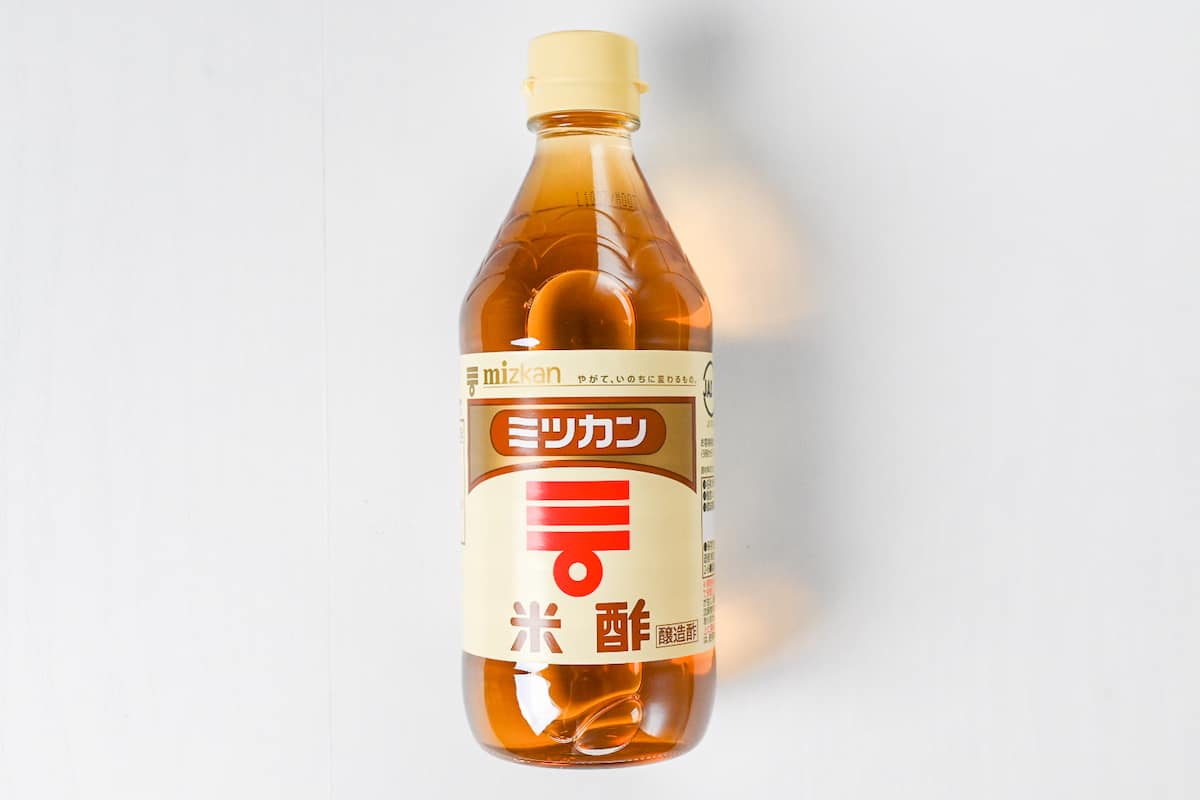
Rice vinegar is the gentle giant of the vinegar world, hailing from Japan. It is made from fermented rice and has a mild acidity of 4-5% and a subtle sweetness. Its delicate, amber-colored profile makes it ideal for sushi rice, sunomono (vinegar salad), and dressings when a tangy flavor is needed without harshness.
Alternative 1: Apple Cider Vinegar
This is the closest match to rice vinegar’s gentle personality. Apple cider vinegar has similar acidity (around 5%) with natural sweetness and less bite than other vinegars.
- Taste impact: Subtle apple sweetness and fruitiness, slightly sharper than rice vinegar but in the same ballpark.
- Use exactly: 1:1 ratio for most uses; add 5% sugar if you need more mellow sweetness.
- Perfect when: You want the most versatile, widely available substitute.
- Watch out for: Brings a hint of apple flavor, usually okay but worth noting.
Alternative 2: White Wine Vinegar
White wine vinegar packs more punch at 6-7% acidity, with wine-derived complexity that can be interesting. But it needs diluting and sweetening to match rice vinegar’s gentle nature.
- Taste impact: Sharper acidity with wine complexity, more aggressive than rice vinegar.
- Use exactly: Mix 2/3 white wine vinegar + 1/3 water, then add a touch of sugar or honey.
- Perfect when: Apple cider vinegar isn’t available and this is what you’ve got.
- Watch out for: Must dilute and sweeten, too harsh otherwise.
- My take: Workable but requires more effort than apple cider vinegar.
Alternative 3: Distilled White Vinegar
The cheapest vinegar around with 5% acidity, but harsh tasting.
- Taste impact: Much harsher and more pungent than rice vinegar, actually quite noticeable difference.
- Use exactly: Mix 4/5 white vinegar + 1/5 water, then add sugar or honey to taste.
- Perfect when: It’s literally all you have and you’re making something forgiving.
- Watch out for: Sharp, aggressive flavor that needs serious mellowing.
- My take: Only use if apple cider vinegar isn’t an option.
Not Recommended Alternatives
Most other vinegars are too aggressive or have wrong flavor profiles for Japanese cooking. Also, I’d avoid pre-seasoned “sushi vinegar” blends for general rice vinegar substitution too. They already have sugar and salt added, which will throw off your cooking if you use them as a straight rice vinegar replacement.
Bottom Line
Apple cider vinegar is your best friend here with similar acidity, natural sweetness. If you’re serious about Japanese cooking, just grab a bottle of unseasoned rice vinegar.
Japanese Rice
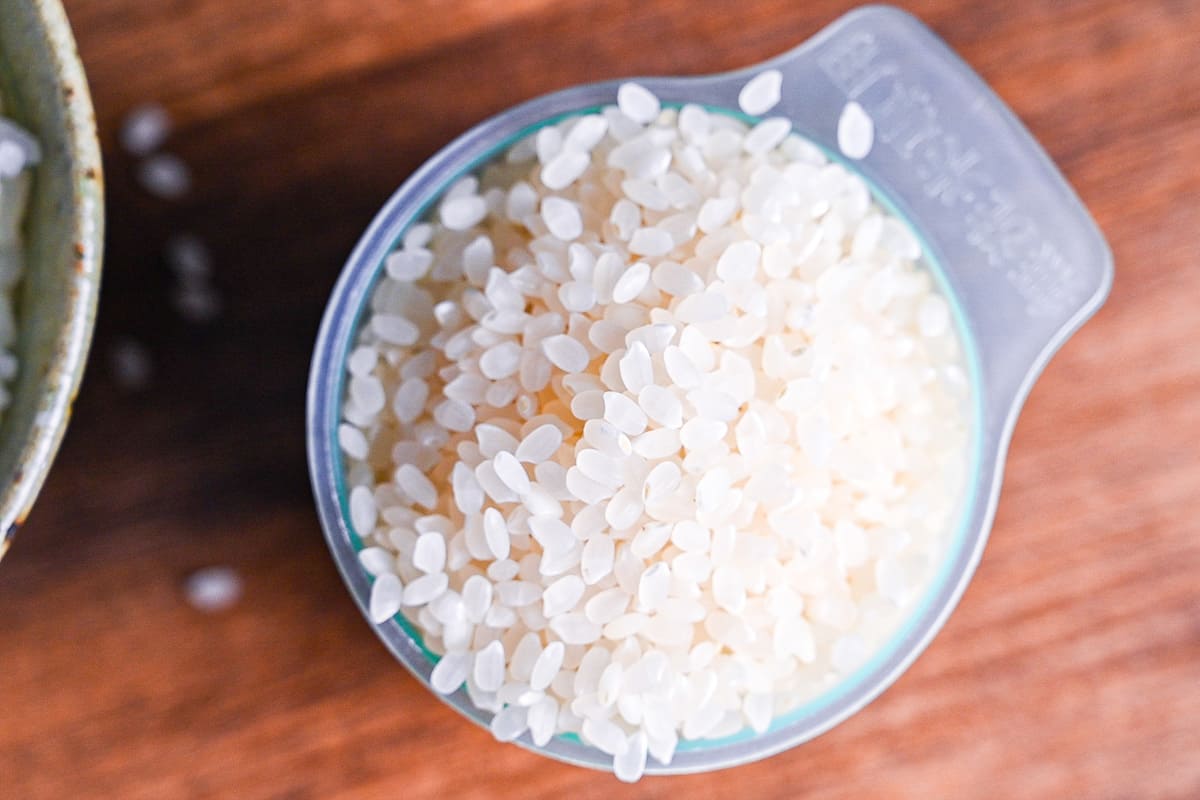
Japanese rice primarily refers to short-grain japonica rice (uruchimai), which becomes sticky, sweet, and pleasantly chewy when cooked. It is essential for sushi, rice bowls, and Japanese meals in general. By the way, Koshihikari rice is grown in the US too.
Alternative 1: California Rice (Calrose)
When Japanese rice isn’t available, Calrose rice from California is the go-to substitute. Calrose is a medium-grain japonica variety that gets you maybe 80% of the way to authentic Japanese rice texture. It has similar starch content but slightly higher protein, which means it’s a bit less sticky and the grains separate more when it cools down.
- Taste impact: Lighter, less aromatic than Japanese rice with less of that signature stickiness.
- Use exactly: Same method but dial back the water slightly.
- Perfect when: You want decent results without paying premium prices for imported rice.
- Watch out for: Separates more when cold, so not perfect for onigiri or sushi.
- My take: Funnily enough, Japan’s recent rice shortage actually had Calrose showing up in Japanese supermarkets.
Alternative 2: Korean Rice or Chinese Short-Grain
Both are japonica varieties like Japanese rice, but Korean rice is your better bet. It’s remarkably close to Japanese rice in both texture and flavor. Chinese short-grain can vary more depending on the specific variety and how it’s processed.
- Taste impact: Korean rice is very close; Chinese short-grain might have slight flavor and aroma differences.
- Perfect when: You live somewhere with good Korean or Chinese markets.
- Watch out for: Nothing in particular.
- My take: If you see Korean rice, grab it. It’s often the closest thing to Japanese rice you can find.
Not Recommended Alternatives
Long-grain rice like jasmine or basmati won’t work. Instant rice is also a no-go. Arborio rice might work for casual dishes, but you cannot make sushi or onigiri with it.
Bottom Line
If you’re making sushi, onigiri, or any dish where rice texture really matters, spend the extra money on proper short-grain Japanese rice. But for everyday rice bowls and casual Japanese cooking? Calrose will do the job without breaking the bank!
Japanese Mayonnaise (Kewpie Style)
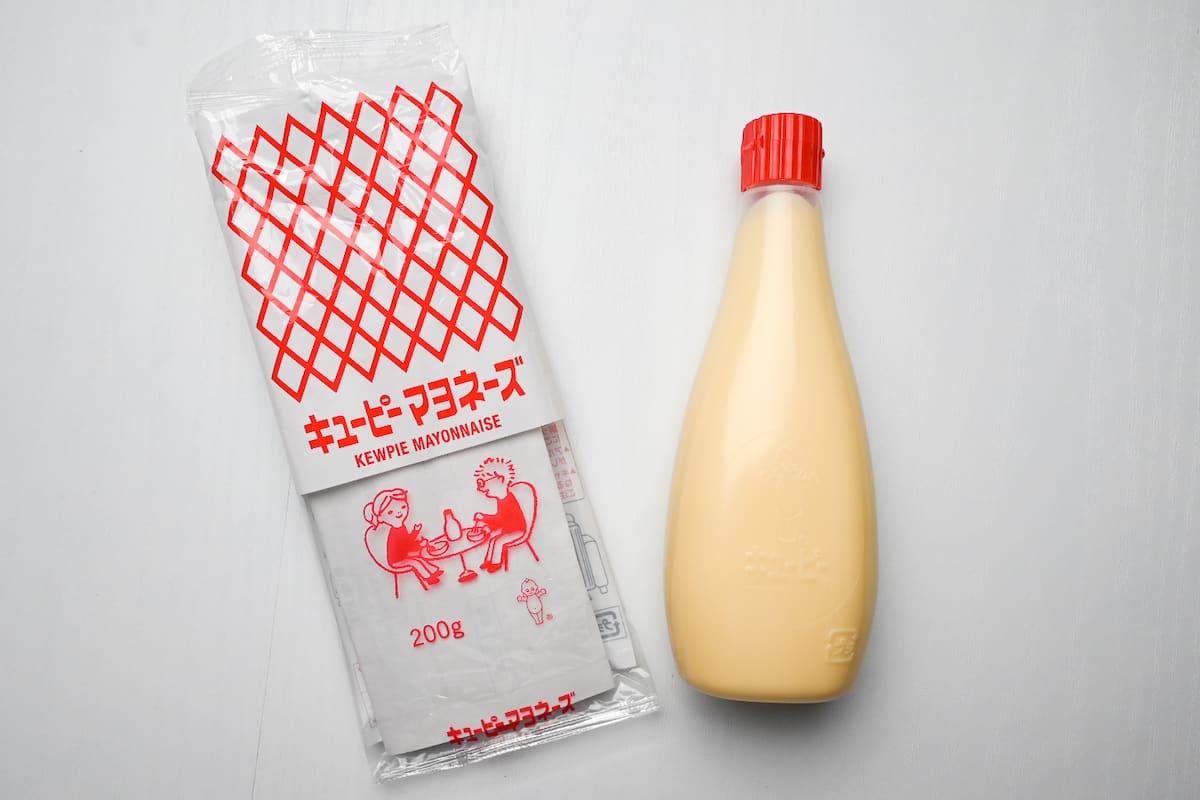
Japanese mayonnaise, like Kewpie, is in a league of its own. It’s usually tangier, richer, and more complex than other mayonnaises. There’s an American version of Kewpie that’s slightly different from the original Japanese recipe, but it’s still worth seeking out.
Alternative 1: Regular Mayo + Rice Vinegar & Sugar
This is your emergency workaround when you need something Kewpie-ish right now. Add rice vinegar for tang, sugar for balance, and a tiny pinch of dashi granules for that umami kick. It’s not going to fool anyone who knows real Kewpie, but it gets you in the ballpark.
- Taste impact: You’ll get some of the tanginess and umami, but I wouldn’t say it’s close enough.
- Use exactly: To 100g regular mayo, add ½ tsp rice vinegar + pinch of sugar + small pinch of dashi granules.
- Perfect when: You don’t want to buy a whole bottle of Kewpie.
- Watch out for: No matter how much you tweak it, it won’t taste exactly like Kewpie.
- My take: Just buy the Kewpie if you can, the difference is worth it.
Alternative 2: Homemade Option

If you’ve got time and want to make your own Kewpie-style mayo from scratch, it’s totally doable. I’ve actually developed a Japanese-style mayo recipe! Check it out if you’re feeling ambitious.
Potato Starch
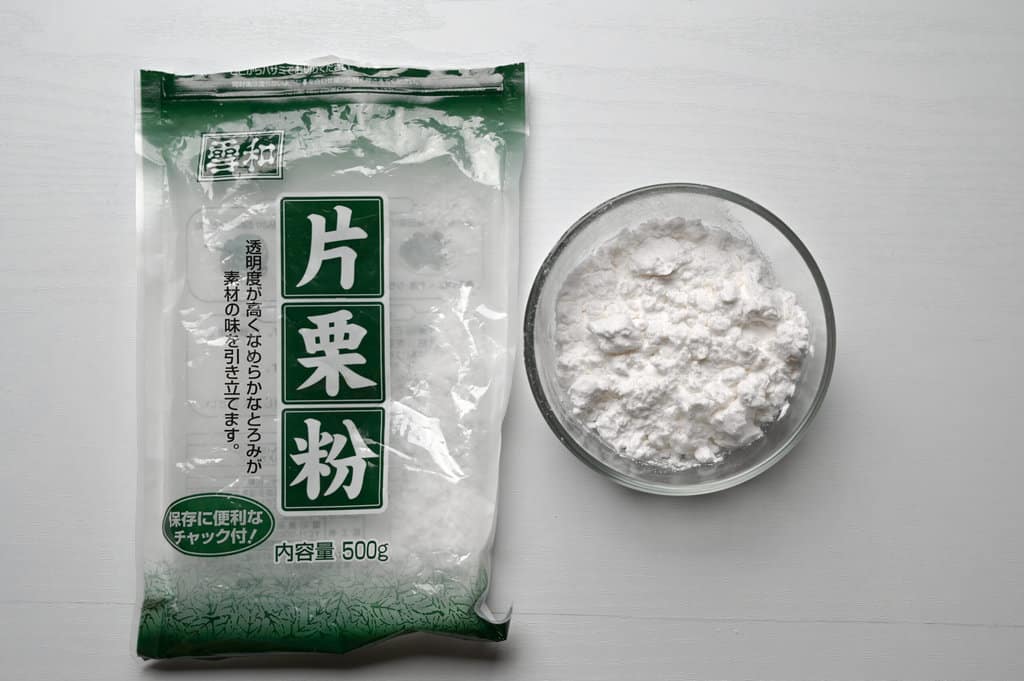
Potato starch (katakuriko) is Japan’s go-to thickening agent and coating for fried foods. It’s basically in every Japanese pantry.
When mixed with water and heated, it creates a glossy, transparent thickening that loosens when cooled. For frying, it gives that incredibly light, crunchy texture that’s different from flour-based coatings.
Alternative 1: Cornstarch (Not Corn Flour)
This is your most reliable swap when potato starch isn’t available. Cornstarch comes from corn but behaves very similarly to potato starch. It thickens sauces and works for frying coatings. The results are about 80-90% as good.
- Taste impact: Slightly finer texture, holds up better when cooled but with less glossy finish.
- Use exactly: 1:1 for frying; for thickening use 1.2x the amount (so if recipe calls for 1 tbsp potato starch, use 1.2 tbsp cornstarch).
- Perfect when: Potato starch is hard to find but cornstarch is everywhere.
- Watch out for: For thickening, you need slightly more to get the same viscosity.
- My take: Works great for both uses, though fried foods absorb slightly more oil and aren’t quite as crunchy.
Alternative 2: Tapioca Starch
Tapioca starch creates strong, stretchy textures with high transparency and good freeze-thaw stability. But it behaves differently when heated and can turn hard and jelly-like when cooled, making it trickier for thickening usages.
- Taste impact: More chewy, elastic texture; can get hard and jelly-like when cooled.
- Use exactly: Start with about 80% of the potato starch amount for thickening purposes.
- Perfect when: You have tapioca starch but no cornstarch available.
- Watch out for: Great for frying, but be careful with sauce thickening.
- My take: Cornstarch is more predictable and user-friendly.
Not Recommended Alternatives
Other starches have unpredictable behaviors that make them hard to recommend. And don’t try to substitute flour for potato starch in Japanese cooking, completely different properties and results.
Bottom Line
Cornstarch is your reliable backup when potato starch isn’t available. It handles both thickening and frying duties well, just remember to use a bit more for thickening. Tapioca starch can work but requires more finesse.
Naganegi
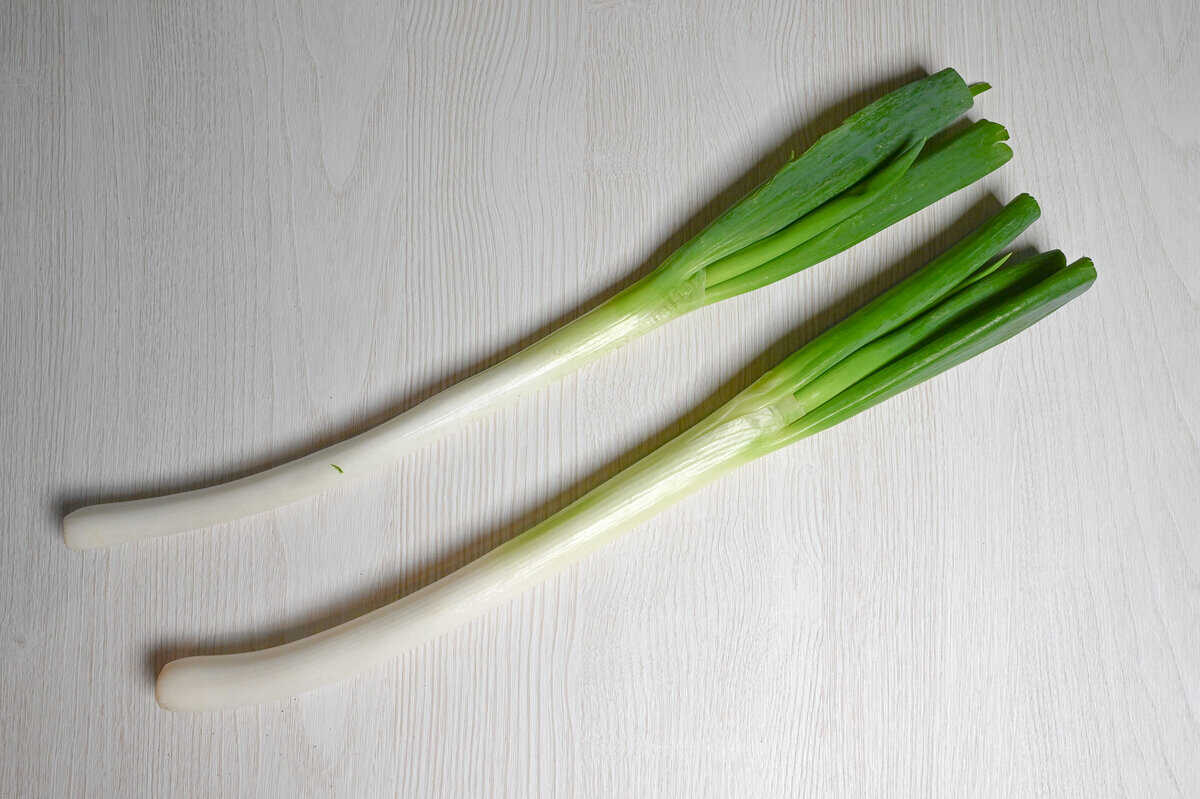
The Japanese word “negi” can be incredibly confusing because it covers everything from thin scallion-like onions to thick leek-like varieties. Among these, naganegi (long onion) is the thick type that you simply cannot substitute with scallions. It’s much closer to a leek, which is why I label it as “Japanese leek” in my recipes to avoid confusion.
Alternative 1: Regular Leek
When you’re outside Japan, regular leeks are your closest match for naganegi. Leeks actually look very similar to shimonita negi (one of Japanese negi variety) and have that same thick white shaft that works well in braised dishes and grilling.
Taste impact: Thicker and sweeter than naganegi, but the green sections are quite fibrous.
- Use exactly: 80% of the naganegi amount (full amounts can be overpowering).
- Perfect when: You’re making hot pot dishes or simmered recipes where you need substantial cooking.
- Watch out for: Takes about 1.5x longer to cook than naganegi. Remove the tough outer leaves and use only the tender inner parts.
- My take: Great for dishes that require long heating.
Alternative 2: Onion
This won’t work for every dish, but when you need finely chopped naganegi white parts for stir-frying, like in my miso ramen recipe, regular onion can step in
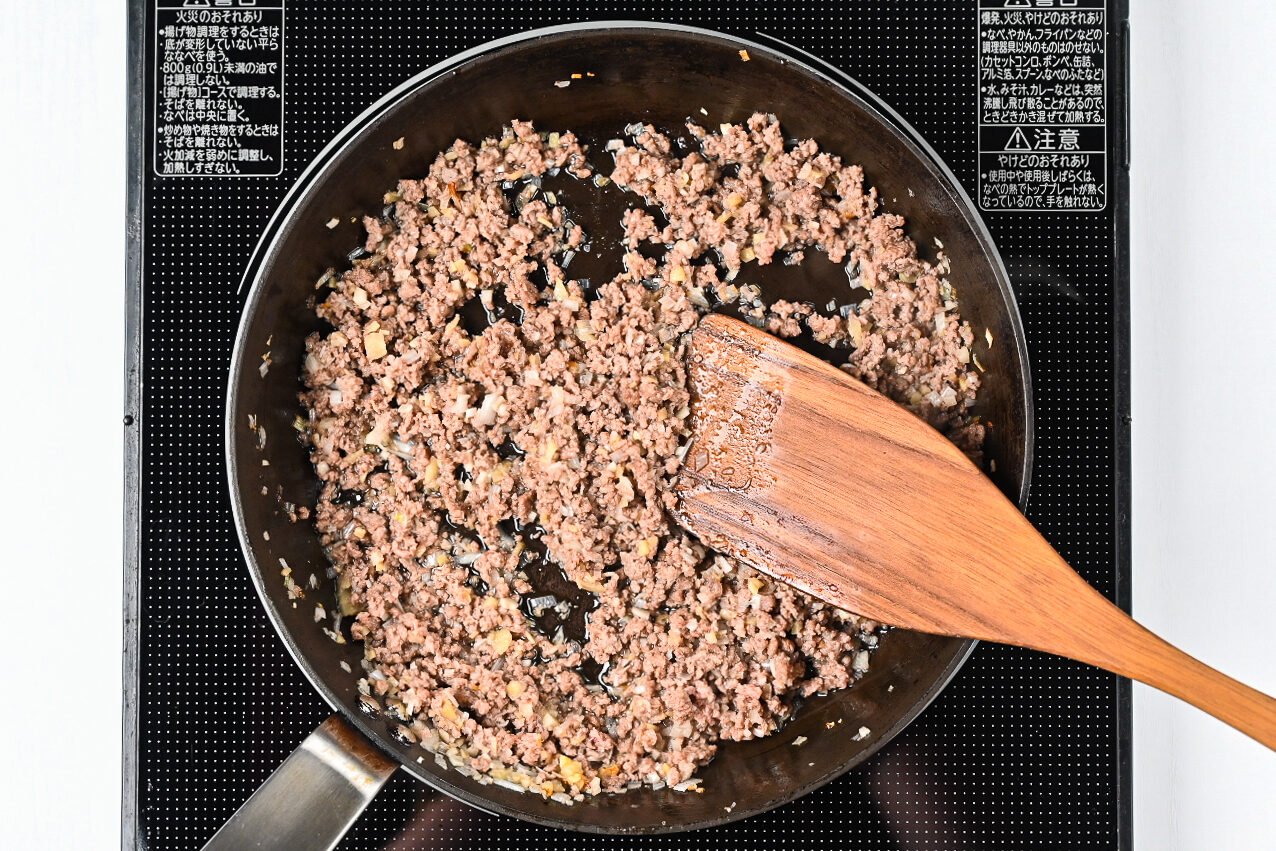
However, please note that it is difficult to substitute hot pot dishes or stews.
Japanese Cucumber
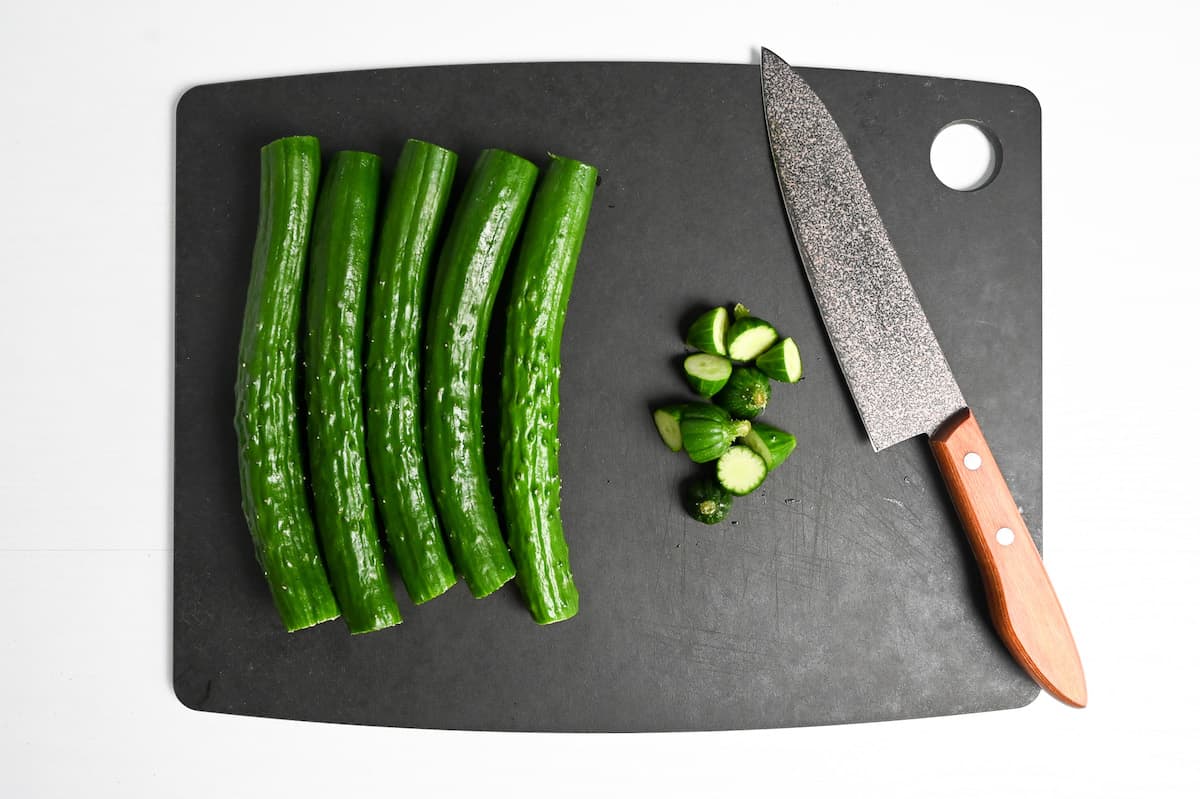
Japanese cucumbers are slim, crisp vegetables with thin skins and minimal seeds. What makes them special is their clean, refreshing taste without the bitter bite you get from many other varieties. They’re perfect for eating raw in salads, quick pickles, and sunomono.
Alternative 1: Persian Cucumber
Persian cucumbers are your closest match to Japanese cucumbers. Both have thin, edible skins and that same crisp-without-being-watery texture. The flavor profile is remarkably similar, clean and refreshing without any harsh bitterness.
- Taste impact: Clean, crisp bite with thin skin and tiny seeds.
- Use exactly: 1:1 ratio.
- Perfect when: You can’t find Japanese cucumbers but Persian ones are stocked at your store.
- Watch out for: Slightly more watery than Japanese cucumbers.
- My take: This is as close as you’ll get.
Alternative 2: English Cucumber
English cucumbers are decent but not a perfect substitute. They’re much thicker and have a softer texture with more water content. There’s also a bit more bitterness, though still way better than other cucumbers.
- Taste impact: Thicker and more watery with softer flesh. Mild bitterness but still relatively clean flavor.
- Use exactly: Use about half the amount since they’re much bigger.
- Perfect when: English cucumbers are your only option at regular supermarkets.
- Watch out for: Cut them into quarters lengthwise to match Japanese cucumber proportions. Scoop out seeds if there are too many, and consider peeling if the skin tastes bitter.
- My take: Workable but requires more prep than Persian cucumbers.
Not Recommended Alternatives
Other thick-skinned varieties are just too different, thick, bitter skins and watery centers that throw off Japanese dishes.
Karashi (Japanese Mustard)
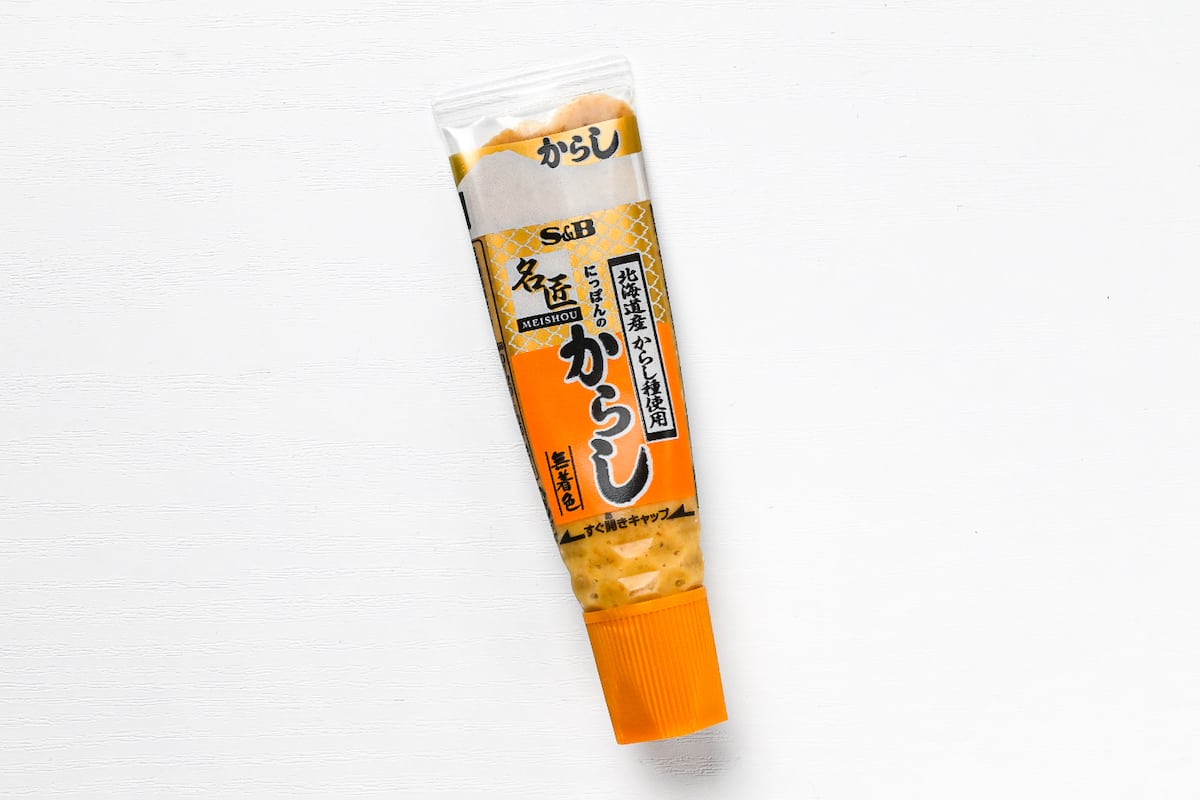
Karashi mustard is a powerhouse condiment that delivers intense, nose-clearing heat. Made from brown/oriental mustard seeds mixed with just water (no vinegar, no sugar), it packs that sharp, wasabi-like punch you’ll find alongside dishes like oden, tonkatsu, and chicken tempura.
Alternative 1: Chinese Hot Mustard Powder
This is your closest match to Japanese karashi. Chinese hot mustard powder uses the same brown mustard seeds and water-only preparation method, giving you simialr results.
- Taste impact: Sharp, pungent heat that hits the nose like karashi. Minimal sweetness or acidity.
- Use exactly: Mix powder and water 1:1.
- Perfect when: You want the most authentic substitute without hunting down specialty Japanese ingredients.
- Watch out for: The heat intensity can vary by brand. Start with less and adjust.
- My take: This is the gold standard substitute. Many Asian grocery stores carry it labeled as “Hot Mustard Powder” or “Oriental Mustard Powder.”
Alternative 2: English Mustard Powder (Colman’s)
English mustard powder is also made primarily from brown mustard seeds and delivers that nose-piercing heat karashi is known for. It’s slightly more aromatic with a hint of salt, but close.
- Taste impact: Very similar sharp heat, though with slightly more European spice notes and minimal salt content.
- Use exactly: Mix powder and water 1:1, just like karashi. Use about 80-90% of the amount if the flavor seems too strong.
- Perfect when: Chinese mustard powder isn’t available but Colman’s is easy to find at regular supermarkets.
- Watch out for: The flavor is slightly more complex than pure karashi.
- My take: Excellent accessible backup option.
Alternative 3: English Mustard (Prepared/Tube)
The jarred version of Colman’s and similar brands contain the same base ingredients but with added salt, sugar, and turmeric. It’s more of a condiment than pure mustard powder.
- Taste impact: Still quite hot compared to other Western mustards, but with noticeable saltiness and slight acidity.
- Use exactly: Use about 70-80% of the amount called for in recipes.
- Perfect when: You need something ready-to-use.
- Watch out for: The added salt and vinegar can throw off traditional Japanese dishes.
- My take: Works in a pinch, but powder versions give you more control.
Not Recommended Alternatives
- American yellow mustard: Way too sweet and tangy compared to karashi.
- Honey mustard or sweet mustards: These are designed to be mild and sweet, the opposite direction from karashi.
- Whole grain mustard: The added vinegar, herbs, and texture make this unsuitable as a karashi alternative.
- Wasabi or horseradish: While these share that nose-clearing heat sensation, the distinct aromatic profiles will completely change the character of your dish.
Bottom Line
Chinese hot mustard powder is your best bet for authentic results. English mustard powder (Colman’s) comes in a close second and is easier to find at regular stores.
Chili Bean Paste (Toban Djan)
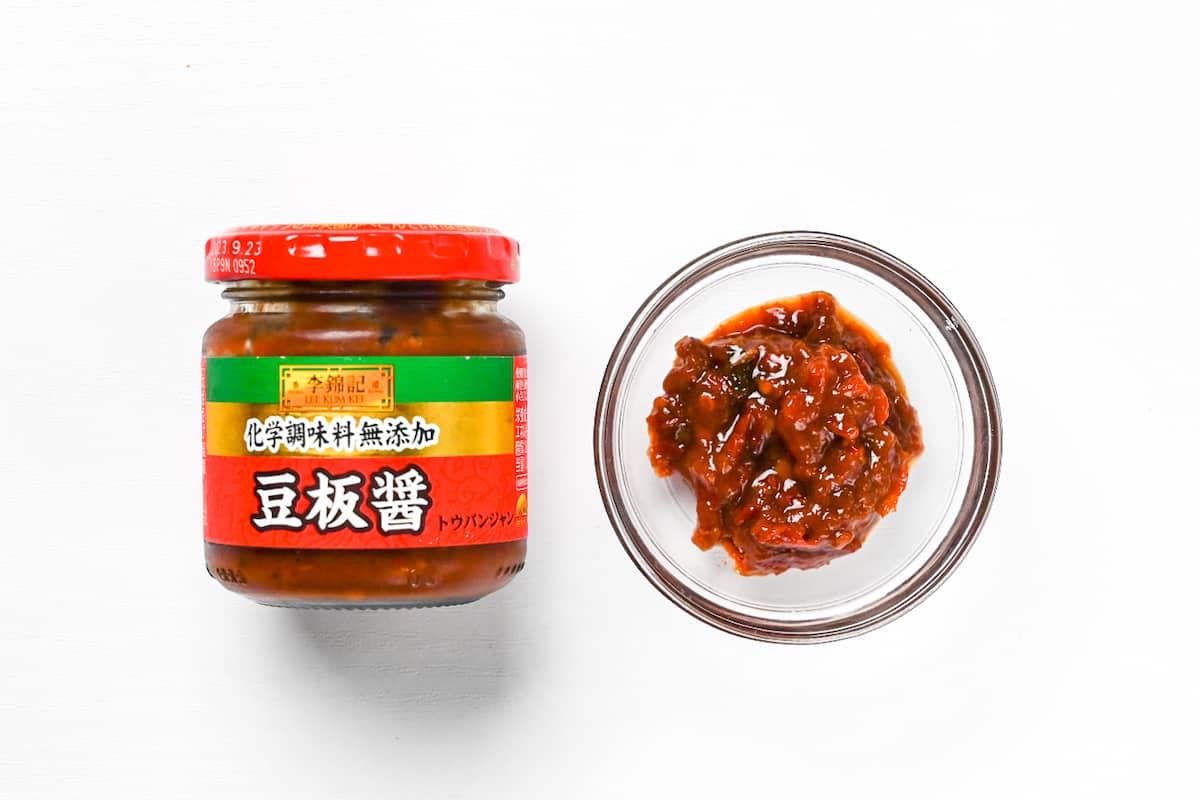
Chili bean paste, known as doubanjiang in Chinese or toban djan in Japanese, is often called the “soul of Sichuan cuisine.” Made from fermented broad beans and chilies, it delivers a complex combination of deep umami, saltiness, and heat that’s essential for chuka dishes like mabo dofu in Japan.
The authentic stuff undergoes months or even years of fermentation in the Sichuan region, developing flavors that are genuinely difficult to replicate.
Alternative 1: Chinese Soybean Paste + Asian Chili Oil
This combination is probably the closest match. Non-spicy Chinese bean paste provides the fermented umami and saltiness, while Asian chili oil adds the heat and red color.
- Taste impact: Remarkably close to the original. You get the deep fermented soybean umami and the right level of heat.
- Use exactly: 1 tsp soybean paste + 1 tsp chili oil for every 1 tsp chili bean paste.
- Perfect when: You can find Chinese soybean paste at Asian markets.
- Watch out for: Make sure you’re using the non-spicy paste.
- My take: If you already have the ingredients, this is your winner. The flavor profile is incredibly accurate.
Alternative 2: Miso + Chili Powder + Soy Sauce + Sesame Oil
This is the most widely recommended “go-to” in Japan, offering the great accessibility if you already have Japanese pantry items.
- Taste impact: Red miso or hatcho miso gives you that fermented depth, while chili powder brings the heat. The sesame oil adds richness, and soy sauce balances the saltiness.
- Use exactly: For 1 tbsp chili bean paste: 1 tbsp red miso + 1 tsp soy sauce + 1 tsp chili powder + ½ tsp sesame oil.
- Perfect when: You already have these Japanese pantry staples and don’t want to buy specialty ingredients.
- Watch out for: Avoid white miso, it’s too sweet. Red miso or hatcho miso work best for that deeper fermented flavor.
- My take: This would be my practical everyday substitute if I don’t live in Japan.
Not Recommended Alternatives
- Gochujang: Gochujang is grain-based (rice/wheat) with sweetness as a primary flavor, while doubanjiang is bean-based with saltiness. They move in opposite flavor directions.
- Douchi (fermented black beans): These have a completely different aromatic profile. While both are fermented bean products, douchi provides a distinctive black bean fragrance that doesn’t match chili bean paste’s role.
- Chili oil alone: Missing all the umami and fermented complexity. The texture is also completely different.
Bottom Line
Doubanjiang is irreplaceable if you’re serious about Sichuan/Chinese/Chuka cooking (Japanese chuka is actually hugely influenced by Sichuan cuisine).
That said, for everyday cooking, the miso-based substitute (Alternative 2) is your most practical option. If you frequently cook Sichuan or Chinese food, just buy a jar of the real thing online. It’s not expensive and lasts forever in the fridge. It’s really worth it.
Japanese (Oriental) Spinach

Japanese spinach has rounded leaves with thin, tender stems that are much more delicate than Western varieties. The leaves are thinner with a gentle texture and natural sweetness that works beautifully in traditional dishes like goma-ae (sesame dressed spinach), ohitashi (blanched spinach), and stir-fries.
Alternative 1: Baby Spinach
Baby spinach is your best bet here. It’s got less oxalic acid than mature spinach, which means less bitterness and more of that sweet, delicate flavor that’s closer to Japanese spinach. The tender leaves work great both raw and cooked.
- Use exactly: 1.25-1.5x the amount since it shrinks dramatically when cooked.
- Perfect when: Japanese spinach isn’t available but baby spinach is easy to find.
- Watch out for: Cooks down fast, so reduce your cooking time to avoid mushy results.
Alternative 2: Bok Choy Leaves
Bok choy leaves (just the leafy parts, not the stems) can work in a pinch. While it’s a different plant family entirely, the leaves are soft and have a mild flavor that won’t overpower delicate Japanese preparations.
- Perfect when: You can’t find any type of spinach but bok choy is available.
- Watch out for: Works better in heartier cooked dishes than delicate preparations due to the different flavor profile.
Not Recommended Alternatives
Arugula has too much peppery bite and completely wrong flavor profile. Kale is way too tough and bitter.
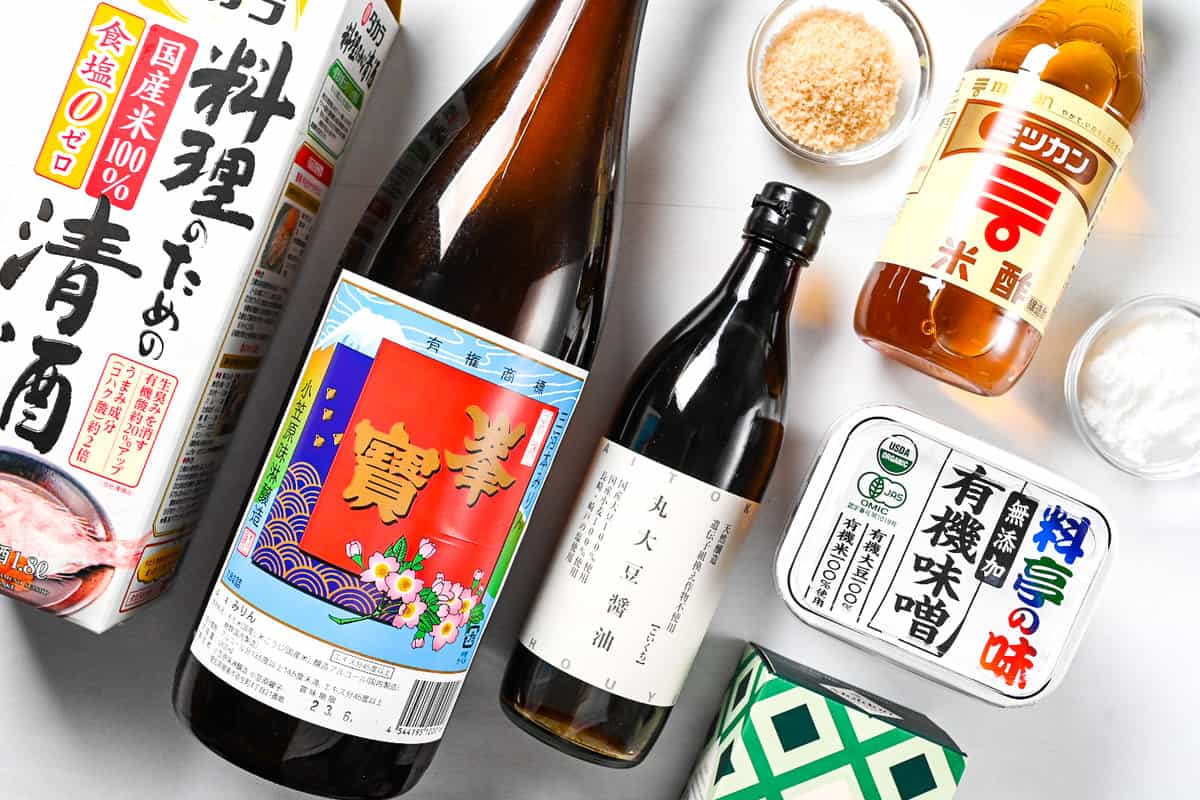
Need More Substitutes?
That wraps up my guide to the most common Japanese ingredient substitutions. What substitutes do you use in your cooking? If you know of any good alternatives that didn’t make this list, I’d love to hear about them.
And if there are other Japanese ingredients you’re struggling to substitute, drop them in the comments! I will add them to a future update!
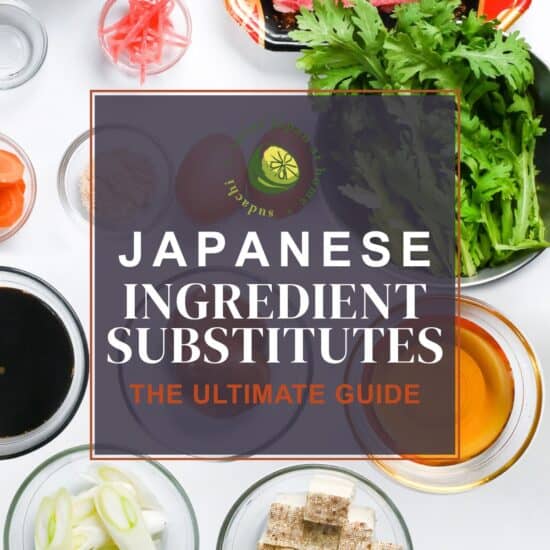
Any emergency substitute for dashi granules? Thanks for a tremendous recipe, and site!
Hi Steven,
Thank you so much for your kind words!
The best substitute depends on how you plan to use the dashi granules.
1. If you’re only adding a small amount for flavor (such as in my salmon fried rice recipe or kinpira gobo recipe), you can use bouillon powder or MSG in slightly smaller quantities.
2. If you need to prepare dashi stock, unsalted chicken stock or vegetable stock would work as emergency alternatives.
Interestingly, in Japan, some people even use ketchup in extreme emergencies, since both contain glutamic acid (umami). However, this is not a substitute I would personally recommend too much.
I hope this helps!
Yuto
Hi Yuto
What do you suggest as a substitute for karashi?
Hi Ethel,
Thank you for your suggestion. I’ve now added a new section dedicated to karashi mustard! 🙂
Yuto
Can korean dashi work in this recipe?
Hi Mary
I’m not too familiar with Korean dashi, but my understanding is that it has a stronger profile. It would be a great sub for heartier dishes where dashi isn’t the main note, but for something delicate like a clear soup, I’d stick with Japanese dashi stock.
Yuto
Dear Yuto,
I’m new to Japanese cooking, but after visiting a couple of Traditional Japanese restaurants: one in London and one in Kent; I fell in love with Japanese food.
Searching the net for beginners recipes I came across your recipes. You most certainly made them achievable, seems enjoyable to cook, easy to follow and looks that they are very tasty to!!!
Anyway, working full-time, which includes unsociable hours and 13 hours shifts, I like to plan a family meals for a week and shop accordingly.
One of the meals requires the use of yellow miso paste. I’m really struggling to find it.
What can I use as an alternative? Please advise.
Really looking forward to cooking your delicious food and enjoying recently discovered immensely tasty Japanese cuisine.
With Thanks,
Viola.
Hi Maria,
Thank you so much for visiting my website! I’m happy to hear that you’re interested in Japanese cooking and that you’ve found my recipes approachable and enjoyable to follow.
Regarding your question about yellow miso paste, from my experience living in England (and a quick look at what’s currently available there), miso isn’t usually labeled as “yellow miso.” I think that term is more commonly used in the U.S. In England, you’ll often find white and red miso I think. Yellow miso is essentially a blend of the two, so you can simply mix white and red miso in roughly equal parts to achieve a yellow (blended) flavor. Also, if you find a tub labeled simply as “miso paste,” it’s often quite close to yellow miso in taste and color.
I hope this helps you get started with your meal planning and that you’ll enjoy exploring Japanese flavors at home. Wishing you lots of enjoyment in your cooking journey!
Yuto
chili bean sauce (toban djan) substitute?
Hi Joan,
Thank you for your suggestion. I’ve now added a new section dedicated to chili bean paste! 🙂
Yuto